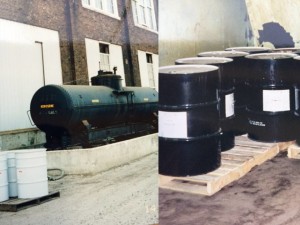The Phase I Environmental Site Assessment (ESA) is a “staple” of the environmental business. Real estate professionals, lenders, entrepreneurs, attorneys, and environmental consultants are all routinely involved in Phase I ESAs.
Phase I ESAs have become increasingly complex as issues such as vapor intrusion/vapor encroachment are increasingly becoming “drivers” on sites. There have also been changes to the definitions to Recognized Environmental Conditions and revisions to the guidance documents.
But why does someone have to do a Phase I ESA in the first place? There are good reasons beyond, “because my bank told me I have to,” for conducting a Phase I ESA.
CERCLA Liability Protection
First and foremost is the Phase I ESA provides liability protection under the federal Comprehensive Environmental Response, Compensation and Liability Act (CERCLA). A CERCLA case that might be familiar to many is the contaminated groundwater case in Woburn, Massachusetts, that was the subject of the movie, “A Civil Action.” While the movie was only okay, it did point to the serious nature of groundwater contamination, both from a potential health and environmental perspective.
Under CERCLA, persons may be held “strictly liable” for cleaning up hazardous substances at properties that they either currently own or operate or owned or operated at the time of the hazardous substance disposal. Strict liability means that a potentially-responsible party may be liable for environmental contamination based solely on property ownership and without regard to fault or negligence.

The potential environmental risks are not typically this obvious in a Phase I ESA. What you don’t see may pose a more substantial business risk (Photo Credit: Dragun Corporation).
Fortunately, CERCLA has procedures for protecting yourself from strict liability (i.e., innocent landowner protections). This is generally interpreted as performing a Phase I ESA. It is important to note that the Phase I ESA must be performed according to the All Appropriate Inquiries (AAI) statute to meet the CERCLA requirements.
Brownfields, Negotiations, Tenant Liability Protection and more
While the CERCLA liability protection is a primary reason for conducting Phase I ESAs, there are other reasons for conducting the Phase I ESA as well.
- Brownfields: A Phase I ESA is generally the first step in obtaining Brownfields’ low-interest loans or grants for cleaning up contamination. The Brownfields’ program information is generally available through State or Federal programs.
- Negotiation: If the property is found to be contaminated, the evidence of the contamination can be used for negotiating the cost or other transaction-related issues.
- Lease termination: Another application is to use the Phase I ESA as a tool for evaluating lessee operations prior to lease termination.
- Tenant liability protection: A tenant may get some protection from strict liability if the owner has met one of the innocent landowner protections described in CERCLA. However, a tenant may become a liable party if the owner has not met one of the innocent landowner protections. A tenant may want to evaluate the owner’s innocent landowner protection status through a Phase I ESA or other method suggested by legal counsel.
- Development Planning: Various Phase I ESA tools, such as historical aerial photographs, may provide you with additional information on the property history and layout. These may aid in your development planning.
Phase I ESAs are very common for anyone involved in commercial real estate transactions, and they provide the buyer with what can be critically-important liability protection. Beyond the protection, they can also provide the user with other valuable information that can assist in the overall business risk management evaluation.
If you have questions about Phase I ESAs, please feel free to contact me (mresch@dragun.com) at 248-932-0228, ext 133.
